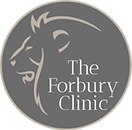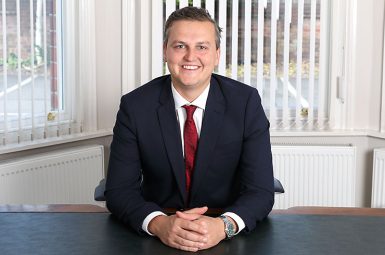Aquablation Therapy
Robotic heat-free surgical treatment for Benign Prostatic Hyperplasia (BPH).
Aquablation therapy for BPH
The specialist prostate surgeons at The Urology Partnership are pleased to offer Aquablation therapy as an alternative to all treatments for BPH (Benign Prostatic Hyperplasia). Available under private insurance or self-pay options.
Aquablation therapy is an innovative surgical procedure used to treat patients with lower urinary symptoms (LUTs) due to benign prostate enlargement (BPH). Benign Prostatic Hyperplasia, or an enlarged prostate, is a prostate that has grown to be larger than normal. As the prostate grows, it may constrict the urethra, making it difficult to urinate and/or apply pressure on the bladder, causing it to weaken and have difficulty emptying.
What is Aquablation therapy?
Aquablation therapy is an advanced, minimally invasive treatment that uses imaging, robotics, and a heat-free waterjet to provide long-lasting relief from BPH with low rates of complications. 1,2,3
It is unique in that it is the only procedure to use a heat-free waterjet controlled by robotic technology to remove prostate tissue and preserve critical anatomy.
In addition, it is the only procedure that combines a camera (called a cystoscope) with ultrasound imaging, giving the surgeon the ability to see the entire prostate in real-time.
As a result, Aquablation therapy is precise, consistent, and predictable, and provides long-term relief no matter how large your prostate is.
In global clinical studies, men who had prostates larger than 50g, Aquablation therapy was shown to have superior outcomes compared to the standard of care for symptom relief. Men with Aquablation had a very low rate of irreversible complications – incontinence, ejaculatory dysfunction, erectile dysfunction.1,2,3
“There were two things that led me to choose Aquablation therapy. First, the lack of heat was key, as I knew heat was associated with undesirable side effects. And second, pairing the skill of my urologist with robotics ensured that the precision necessary for this procedure was there.”
Steve, 66
How does Aquablation therapy work?
The procedure involves two key stages:
1. Creating a surgical map
Your surgeon will identify important anatomy that maintains sexual function and continence to create a personalised treatment plan, shown by the blue dotted line. The tissue inside the dotted line will be removed while the tissue outside will be left in place.
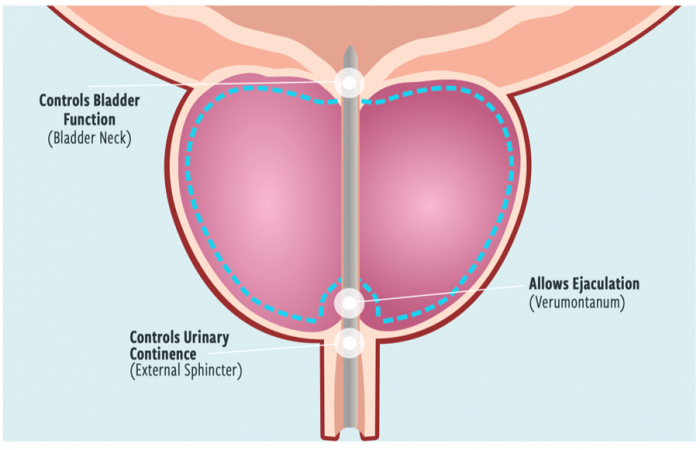
2. Removing the prostate tissue
Once the plan is created, a robotically-controlled, heat-free waterjet removes the prostate tissue. This robotic technology ensures the prostate tissue is removed precisely, consistently, and predictably.
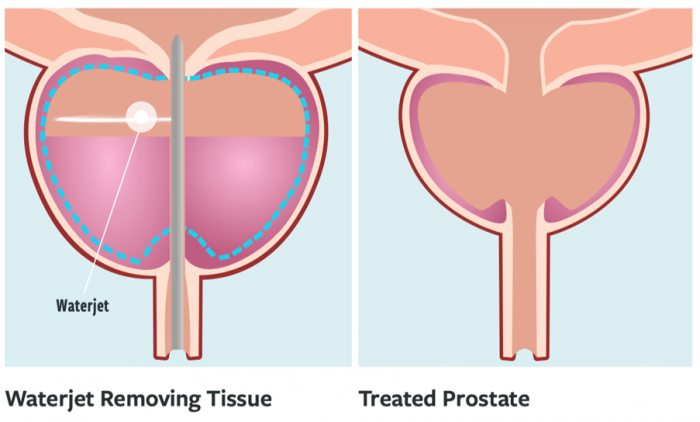
The results you can expect from Aquablation therapy
Clinical studies have shown that Aquablation therapy offers significant symptom relief and low rates of irreversible complications across prostates of all sizes and shapes.1,2,3
- +16 point IPSS improvement (BPH symptom score)
- 2x improvement in flow of urine
- 10/10 men preserve continence
- 10/10 men preserve erections
- 9/10 men preserve ejaculation
Why you should choose Aquablation therapy
There are numerous surgical treatment options for BPH. Aquablation therapy is a different kind of surgical procedure which has a very low rate of irreversible complications (incontinence, ejaculatory dysfunction, erectile dysfunction)1,2 for three reasons:
1. Two kinds of imaging provides a view of the entire prostate
Aquablation therapy is the only procedure that uses a camera (cystoscope) in combination with ultrasound imaging to view the prostate. This enables the surgeon to see the entire prostate so he or she can create a surgical map of the areas of the prostate to remove and those to avoid. In every other available surgical procedure, the surgeon’s view of the prostate is limited to a single camera (cystoscope). This limits the surgeon’s ability to see the parts of the prostate that control erectile function, ejaculatory function, and incontinence.
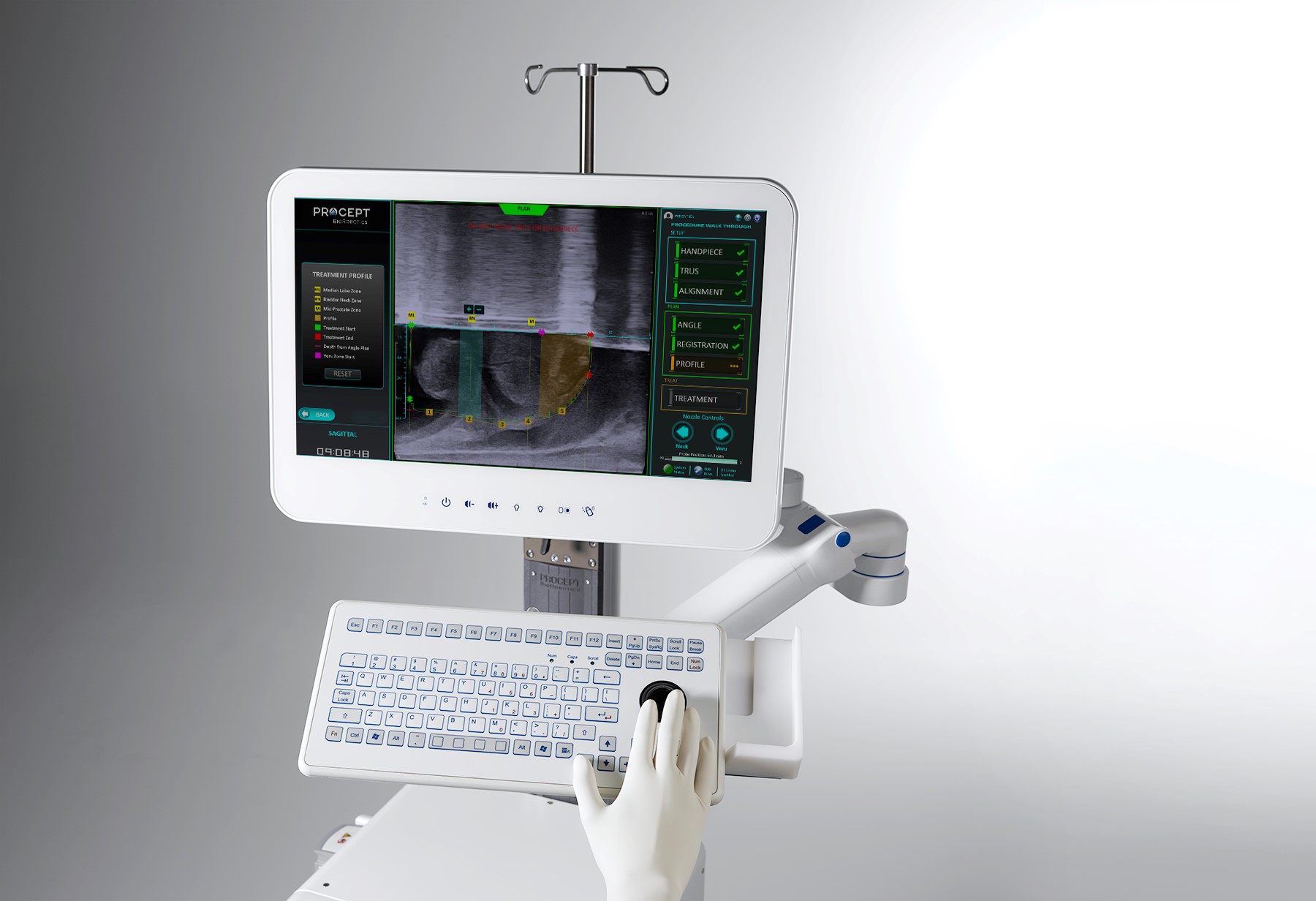
2. Heat-free waterjet technology allows for safe removal of prostate tissue
Aquablation therapy is the only procedure that uses a heat-free waterjet to remove prostate tissue. Most resective procedures utilise heat to remove prostate tissue, and heat may be damaging to the parts of the prostate that control erectile function and ejaculatory function. It should be noted that some surgeons may choose to use a minimal amount of cautery following an Aquablation procedure to control bleeding.
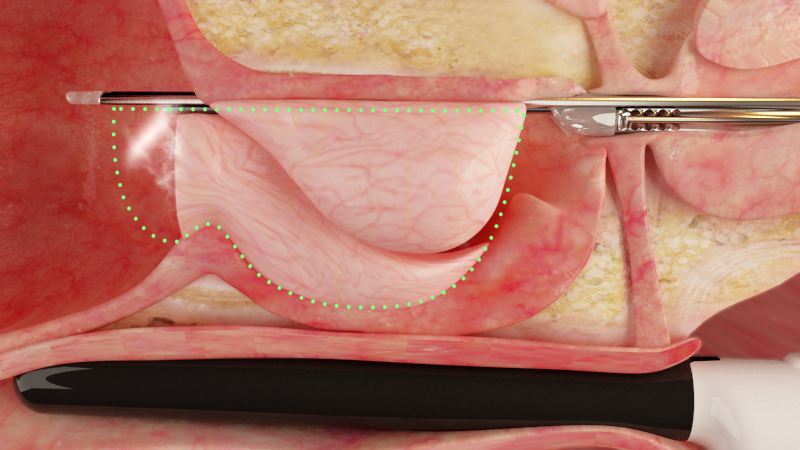
3. Robotics and advanced computer software ensures precision
Your personalised treatment plan combined with robotic technology minimises human error in removing prostate tissue and ensures the prostate tissue is removed precisely, consistently, and predictably.
Enquire about Aquablation therapy at The Urology Partnership
If you are interested in Aquablation therapy you may arrange a consultation with one of our urologists specialising in the procedure. Please make an appointment or call us on 0118 920 7040.
We also have some helpful patient information to provide more details.
Aquablation Therapy FAQs
As with most BPH procedures, you will wake up with a catheter, which allows you to pee while your urethra heals.
Patients typically stay overnight in the hospital. Before discharge, the doctor will typically remove the catheter and ask you to pee on your own.
If you cannot pee on your own and empty your bladder, the doctor may send you home with a catheter for a few days or may keep you an additional night in the hospital.
While no one likes staying overnight in a hospital, the benefit with Aquablation therapy is that most patients end up leaving the hospital without a catheter.1,2,3
Once you’re home, you may experience mild burning during urination for a couple of weeks. This can be managed with mild pain medication. Patients can resume their normal activities once approved by their doctor.
All surgical treatments have inherent and associated side effects. Individual’s outcomes may depend on several factors, including but not limited to patient characteristics, disease characteristics and/or surgeon experience.
The most common side effects are mild and transient and may include:
- mild pain or difficulty when urinating,
- discomfort in the pelvis,
- blood in the urine,
- inability to empty the bladder or a frequent and/or urgent need to urinate,
- and bladder or urinary tract infection.
Other risks include ejaculatory dysfunction and a low risk of injury to the urethra or rectum where the devices gain access to the body for treatment.
There may be other risks as in other urological surgery, such as anaesthesia risk or the risk of infection, including the potential transmission of blood borne pathogens.
The WATER (Waterjet Ablation Therapy for Endoscopic Resection of prostate tissue) study is the first FDA pivotal study to execute a direct comparison of a new BPH surgical technique to the gold standard in treating BPH, TURP (NCT0205919).[i] The primary endpoint results were published in 2018.[ii]
The WATER study is a 181 male patient double-blind, randomized clinical trial with 17 sites comparing Aquablation therapy to TURP in prostate size ranging from 30 to 80 mL. The study sample size was set to establish 80% power to demonstrate superiority for the primary safety endpoint. Both primary endpoints were analysed using a typical methodology to first test for non-inferiority then subsequently test for superiority. It is important to emphasize the study was double-blind requiring an independent blinded follow-up team at each site to minimize any bias.
Five-year outcomes of the WATER study demonstrate Aquablation comparable to TURP in BPH symptom reduction, urinary flow rate improvement, quality of life and retreatment:
- The mean IPSS reduction at five years was 15.1 and 13.2 for Aquablation and TURP, respectively
- Aquablation demonstrated statistically superior outcomes in efficacy in subjects with larger prostates (50 – 80 mL) as validated by reduction in symptom scores
- The mean five-year improvements in Qmax were 8.7 mL/s (+125%) and 6.7 mL/s (+89%) for Aquablation and TURP, respectively
- There were no procedure-related adverse events between year three and year five in either arm
- At five-year follow up the percentage of patients requiring an additional BPH therapy (started BPH medication anew or an intervention) were 6.0% and 12.3% for Aquablation and TURP, respectively
- Aquablation therapy demonstrated a marked reduction in the risk of postoperative anejaculation
The authors of the WATER study stated:
- The improvement in net health outcomes from Aquablation therapy outweigh those offered by a TURP when considering the efficacy benefit along with the lower risk of needing a secondary BPH therapy and avoiding retrograde ejaculation.
- Following Aquablation therapy, symptom reduction and uroflow improvement at five years have shown to be durable and consistent across all years of follow-up compared to TURP.
Larger prostates (> 50 mL) demonstrated a larger safety and efficacy benefit for Aquablation over TURP.
Clinical References
1. Gilling P, Barber N, Bidair M, et al. Five-year outcomes for Aquablation therapy compared to TURP: results from a blinded randomized trial men with LUTS due to BPH. Canadian Journal of Urology February 2022.
2. Zorn, K. et al. Aquablation for benign prostatic hyperplasia in large prostates (80-150 ml): WATER II 3-year results. BJUI Compass October 2021
3. Elterman D, Gilling P, Roehrborn C, et al. Meta-analysis with individual data of functional outcomes following Aquablation for lower urinary tract symptoms due to BPH in various prostate anatomies. BMJ Surgery, Interventions, & Health Technologies. June 2021.
4. Elterman DS, Foller S, Ubrig B, et al. Focal bladder neck cautery associated with low rate of post-Aquablation bleeding. The Canadian Journal of Urology April 2021; 28(2).
5. SAME DAY DISCHARGE WITH AQUABLATION THERAPY. Helfand,B. (2021). Aquablation Therapy Day Case Feasibility [White Paper] PROCEPT BioRobotics.
Next Steps
Our Aquablation Therapy Specialists
Get fast access to leading specialists for the swift diagnosis and treatment of urological conditions in a private clinic environment.
If you would like more information or wish to arrange a consultation with one of our specialist consultant urological surgeons then please either Call 0118 920 7040 or complete the form below.
Insured patients
Contact your GP and ask for a referral to the Urology Partnership.
All consultations, investigations and treatments are covered by major insurance companies (depending on policy).
Funding your own treatment
Self-funding initial consultation fee is £205. Follow up fees are £165.
Consultation charges are exclusive of any tests and other investigations that the consultant may wish to carry out.
